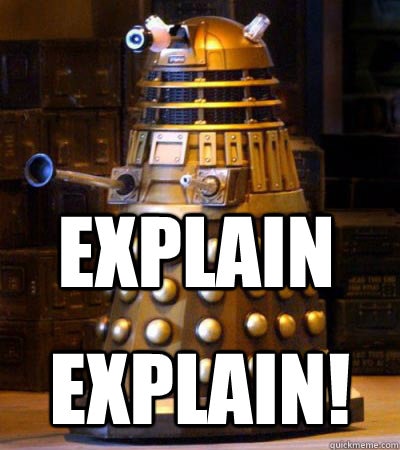 A common lab in physiology is to isolate and stimulate the gastronomes of a frog. However, the frog cannot be put back together. Therefore in part 1 (single stimulus) we traveled back in time and had Dr. Spock do the experiments for us on a frog named Gorgu. However, Dr. Spock realized he needed help for part 2 (lets face it, Grogu is an 80 year old problem child). Therefore Dr. Spock traveled years into the future with Grogu using the
Datalus maneuver to enlist the help of Dr. Maureen
Robinson and her trusty robot, R2-D2 (see picture right, be thankful it is without sound) on board Babalon 5. Yes, the author of this page is still burning in hell.
A common lab in physiology is to isolate and stimulate the gastronomes of a frog. However, the frog cannot be put back together. Therefore in part 1 (single stimulus) we traveled back in time and had Dr. Spock do the experiments for us on a frog named Gorgu. However, Dr. Spock realized he needed help for part 2 (lets face it, Grogu is an 80 year old problem child). Therefore Dr. Spock traveled years into the future with Grogu using the
Datalus maneuver to enlist the help of Dr. Maureen
Robinson and her trusty robot, R2-D2 (see picture right, be thankful it is without sound) on board Babalon 5. Yes, the author of this page is still burning in hell.
In part 1, we looked at the concepts of threshold and motor unit recruitment by increasing the voltage. This gave us a series of increasingly stronger single twitch contractions. In part 2 we will look at what happens when we stimulate the muscle multiple times. We will start out slow with 4 stimuli per second. This will give us 4 twitch contractions. We increase the number of stimuli given to Grogu's muscle to observe summation, treppe, tetanus, and finally fatigue.
If you observe the oscilloscope below, you will notice that the X axis (milliseconds) has changed. The stimuli will begin at the 100 mS mark. Notice for the last 2 (90 and 120) the muscle begins to lose force without going off the axis. This is because the muscle is beginning to fatigue.
Click on each of the frequencies of contraction starting with 4 contractions per second. Note the max force when the muscle stops contracting.
After each trial, please scroll down so you can see Dr. Robbinson's notes.
